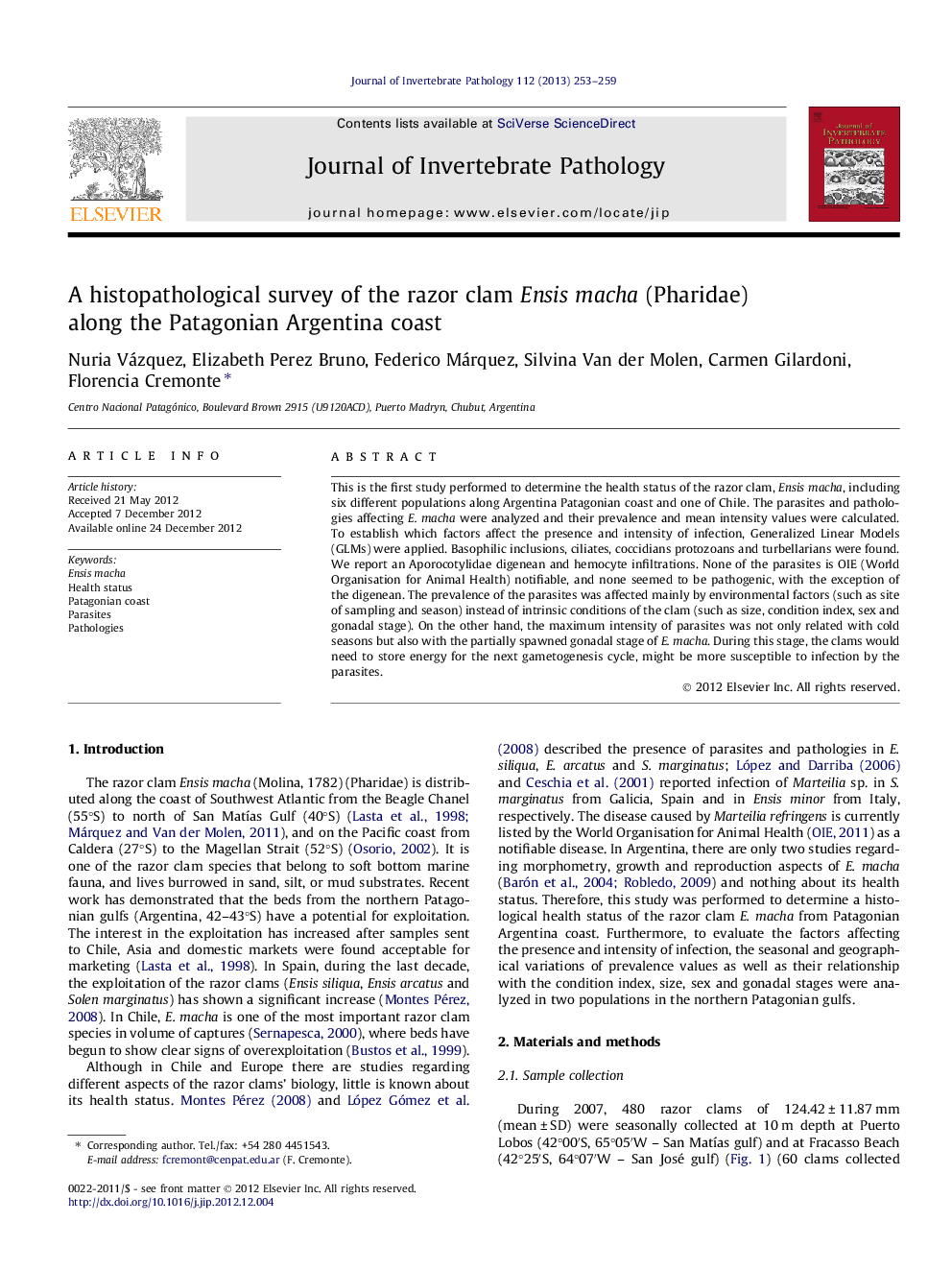| Article ID | Journal | Published Year | Pages | File Type |
|---|---|---|---|---|
| 6389570 | Journal of Invertebrate Pathology | 2013 | 7 Pages |
This is the first study performed to determine the health status of the razor clam, Ensis macha, including six different populations along Argentina Patagonian coast and one of Chile. The parasites and pathologies affecting E. macha were analyzed and their prevalence and mean intensity values were calculated. To establish which factors affect the presence and intensity of infection, Generalized Linear Models (GLMs) were applied. Basophilic inclusions, ciliates, coccidians protozoans and turbellarians were found. We report an Aporocotylidae digenean and hemocyte infiltrations. None of the parasites is OIE (World Organisation for Animal Health) notifiable, and none seemed to be pathogenic, with the exception of the digenean. The prevalence of the parasites was affected mainly by environmental factors (such as site of sampling and season) instead of intrinsic conditions of the clam (such as size, condition index, sex and gonadal stage). On the other hand, the maximum intensity of parasites was not only related with cold seasons but also with the partially spawned gonadal stage of E. macha. During this stage, the clams would need to store energy for the next gametogenesis cycle, might be more susceptible to infection by the parasites.
Graphical abstractDownload full-size imageHighlights⺠We examined the health status of Ensis macha in seven populations from Patagonia. ⺠Basophilic inclusions, ciliates, coccidians protozoans, and turbellarians were found. ⺠We report an Aporocotylidae digenean and hemocytic infiltrations. ⺠The prevalence seemed to be affected by environmental factors.
